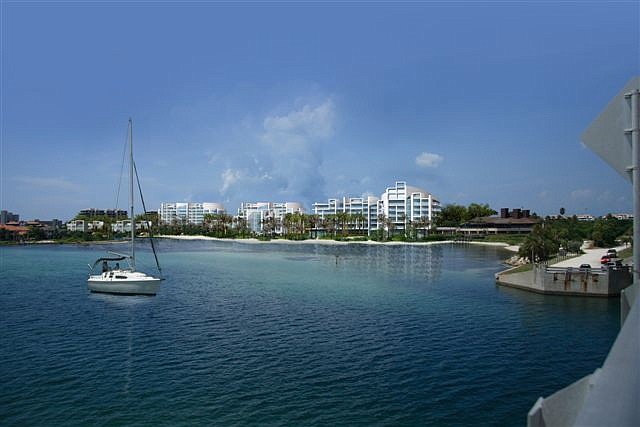- April 18, 2024
-
-
Loading

Loading

Ocean Properties officials erased any doubts about their desire to redevelop the Longboat Key Club at Tuesday’s Planning and Zoning Board meeting. The only thing preventing a project from moving forward now is a town ordinance.
Planning, Zoning and Building Director Alaina Ray told the planning board Tuesday she doesn’t know why Bill Spikowski, of Spikowski Planning Associates, was inexplicably told in May to stop working on changes to an Outline Development Process.
“There was no work being done on this ordinance from May until September when I had communications with Bill, and I can’t tell you why,” Ray said. “In mid-December (after Ray became director), we funded him again, and he started in earnest. I can’t speak as to the thought process as to why the work stopped.”
Planning board members expressed frustration that they were still providing comment for an ordinance that needs to be updated to help properties such as the Key Club proceed with a future project.
“This is a stop-gap measure that’s taken a year and we’re just now commenting on it,” said planning board member Allen Hixon. “We should have fixed it and had it in front of us a long time ago.”
Key Club officials, which haven’t expressed an interest in talking publicly about a Key Club project until Tuesday, are now ready to help the town with ordinance changes that will pave the way for a future project application.
Ocean Properties Vice President Mark Walsh, son of company founder Tom Walsh, and Vice President of Operations Andy Berger attended the meeting to provide comments to proposed modifications to the ODP process, which allows applicants to make modifications and ask for departures from town codes to get approval for projects town staff could not otherwise consider.
Spikowski made suggestions to the ordinance at the meeting, which would allow an applicant like the Key Club to submit a future project.
Walsh told the planning board that he intends to build a future project at the Key Club that fits within the neighborhood and complies with codes.
Board members, however, expressed concern and the need for clarification for an ODP process that doesn’t explicitly state who owns or is in control of unused units slated for planned unit developments (PUDs) like those in Islandside and Harbourside.
There are approximately 600 unused units in Harbourside and 800 unused units in Islandside. The planning board wants to know who can ask to build those undeveloped units.
“Where I come from, density belongs to the property owner,” said planning board Chairwoman B.J. Bishop. “But in the case of Harbourside and Islandside, who controls the unused units and who can ask for them? The golf course, the existing condos, the tennis courts? It’s not clear.”
Walsh told the planning board that from his perspective, his company, which bought the Key Club in 2012, is in control of the unused units.
“My perspective is density was there and belongs to the person who will develop the vacant land,” Walsh said. “I think there are rights there and we need something that allows us to move forward. We want to build a quality development that fits with the neighborhood.”
Walsh also told the board he hopes the town preserves the company’s rights to ask for 12-story buildings and 130 feet of height for tourism uses for a future project, which the comp plan currently allows.
However, the current ODP process allows for departures up to eight stories, making it even more confusing for an applicant looking to town codes and plans for clarification.
“To do a good development at the club, you are going to need height,” Walsh said. “Lowering height is problematic to us and won’t get us where we want to go with a quality project because of setbacks. There are 145-foot buildings in that (Islandside) area now. I think in this district, we would like to work with staff to find a solution we think is better.”
Ray explained the proposed changes as “a stop-gap measure” for applicants such as the Key Club who otherwise can’t ask for changes unless the town changes its ODP process. Those properties have been in limbo since a judge’s 2012 ruling that quashed the process by which the town approved the former Key Club project redevelopment application.
The ultimate goal, Ray said, is to eliminate the ODP process altogether once the town’s codes and comp plan are updated “from the ground up.”
That process, Ray said, will take two years to complete. Walsh said he’s willing to work with the town during this process.
“The long-term goal is to address nonconformities on island that is 99% developed,” Ray said. “We are very excited to make these codes simple, understandable and be able to address modern issues we now face. We bang our heads every day on our desks when dealing and having to interpret these current codes.”
Contact Kurt Schultheis at [email protected]